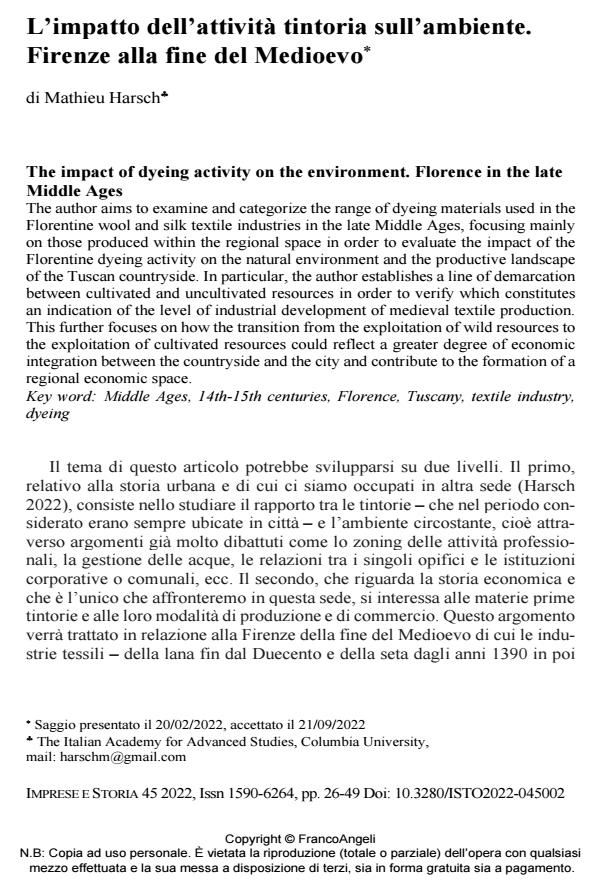L’impatto dell’attività tintoria sull’ambiente. Firenze alla fine del Medioevo
Titolo Rivista IMPRESE E STORIA
Autori/Curatori Mathieu Harsch
Anno di pubblicazione 2022 Fascicolo 2022/45
Lingua Italiano Numero pagine 24 P. 26-49 Dimensione file 272 KB
DOI 10.3280/ISTO2022-045002
Il DOI è il codice a barre della proprietà intellettuale: per saperne di più
clicca qui
Qui sotto puoi vedere in anteprima la prima pagina di questo articolo.
Se questo articolo ti interessa, lo puoi acquistare (e scaricare in formato pdf) seguendo le facili indicazioni per acquistare il download credit. Acquista Download Credits per scaricare questo Articolo in formato PDF

FrancoAngeli è membro della Publishers International Linking Association, Inc (PILA)associazione indipendente e non profit per facilitare (attraverso i servizi tecnologici implementati da CrossRef.org) l’accesso degli studiosi ai contenuti digitali nelle pubblicazioni professionali e scientifiche
The author aims to examine and categorize the range of dyeing materials used in the Florentine wool and silk textile industries in the late Middle Ages, focusing mainly on those produced within the regional space in order to evaluate the impact of the Florentine dyeing activity on the natural environment and the productive landscape of the Tuscan countryside. In particular, the author establishes a line of demarcation between cultivated and uncultivated resources in order to verify which constitutes an indication of the level of industrial development of medieval textile production. This further focuses on how the transition from the exploitation of wild resources to the exploitation of cultivated resources could reflect a greater degree of economic integration between the countryside and the city and contrib-ute to the formation of a regional economic space.
Parole chiave:Middle Ages, 14th-15th centuries, Florence, Tuscany, textile industry, dyeing
Mathieu Harsch, L’impatto dell’attività tintoria sull’ambiente. Firenze alla fine del Medioevo in "IMPRESE E STORIA" 45/2022, pp 26-49, DOI: 10.3280/ISTO2022-045002